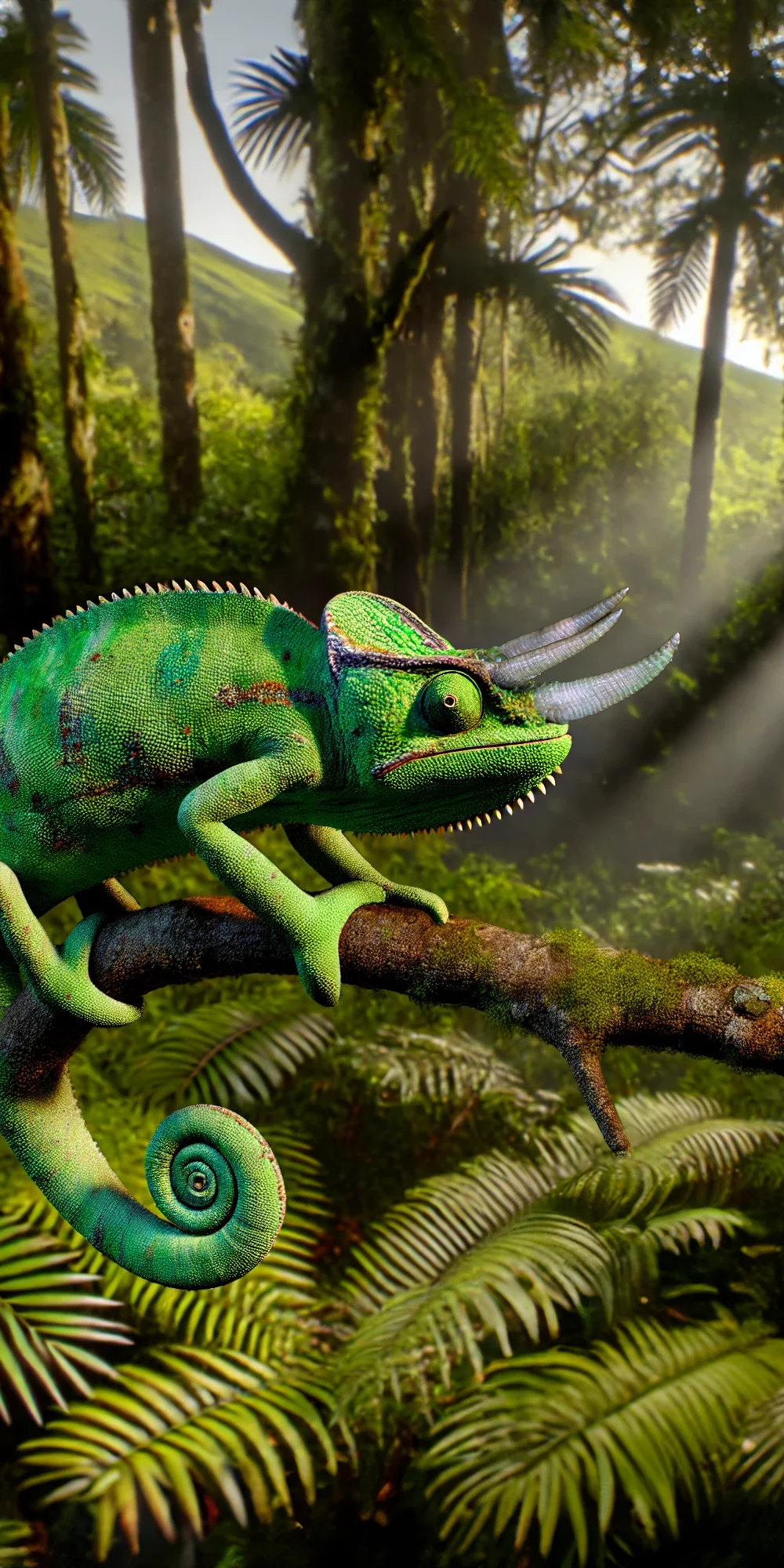The Jackson's Chameleon
Jackson's Chameleons, native to East Africa, are known for their three distinct horns on their heads. These chameleons have the ability to change colors, helping them blend into their surroundings. Their bodies are adorned with vibrant colors and patterns, making them unique and intriguing creatures. Jackson's Chameleons are arboreal, spending most of their time in trees, and have a long, grasping tail to help with their climbing.

| Jackson's Chameleon | |
|---|---|
| Size | 10-14 inches (25-36 cm) |
| Weight | 170-200 grams (6-7 oz) |
| Speed | 8-10mph (13-16km/h) |
| Key Strength | Horn defense mechanism |
| Biggest Weakness | Relatively slow movement |
| Scientific Name | Trioceros jacksonii |
| Family | Chamaeleonidae |
| Habitat | Trees and bushes in forested areas |
| Geography | East Africa |
| Diet | Insects, small birds, and vegetation |
| Lifespan | 5 years - 10 years |

The Jackson's Chameleon
Jackson's Chameleons, native to East Africa, are known for their three distinct horns on their heads. These chameleons have the ability to change colors, helping them blend into their surroundings. Their bodies are adorned with vibrant colors and patterns, making them unique and intriguing creatures. Jackson's Chameleons are arboreal, spending most of their time in trees, and have a long, grasping tail to help with their climbing.
Fun Fact: One fun fact about Jackson's Chameleon is that they have independently moving eyes, allowing them to see in two different directions at the same time.
| Jackson's Chameleon | |
|---|---|
| Size | 10-14 inches (25-36 cm) |
| Weight | 170-200 grams (6-7 oz) |
| Speed | 8-10mph (13-16km/h) |
| Key Strength | Horn defense mechanism |
| Biggest Weakness | Relatively slow movement |
| Scientific Name | Trioceros jacksonii |
| Family | Chamaeleonidae |
| Habitat | Trees and bushes in forested areas |
| Geography | East Africa |
| Diet | Insects, small birds, and vegetation |
| Lifespan | 5 years - 10 years |
Jackson's Chameleon Matchups
We use AI to simulate matchups between the Jackson's Chameleon and other animals. Our simulation considers size, strength, and natural predatory behaviors to determine the most likely outcome.
Jackson's Chameleon: Diet, Predators, Aggression, and Defensive Behaviors
What do Jackson's Chameleons eat?
Jackson's Chameleons are insectivores, meaning they primarily feed on insects such as crickets, grasshoppers, and mealworms. They may also consume small lizards and vegetation as part of their diet.
Do Jackson's Chameleons have any predators?
In their native habitat of Hawaii, Jackson's Chameleons face predation from birds of prey such as hawks and owls. Additionally, mongooses and introduced predators like rats and cats pose a threat to their population.
Are Jackson's Chameleons aggressive?
While Jackson's Chameleons are not inherently aggressive towards humans, they may display territorial behavior towards other chameleons, especially during mating season. They may hiss or display their colorful markings as a warning to potential rivals.
Do Jackson's Chameleons fight?
Jackson's Chameleons are known to engage in territorial disputes with other males, especially during the breeding season. These fights can involve head bobbing, throat puffing, and even physical combat using their strong jaws and sharp claws.
How do Jackson's Chameleons defend themselves?
When threatened, Jackson's Chameleons have several defense mechanisms to protect themselves. They can change color to blend into their surroundings, puff up their bodies to appear larger, and use their long, sticky tongue to catch prey or deter predators.
What is Jackson's Chameleons' biggest weakness in a fight?
Despite their ability to change color and blend into their environment, one weakness of Jackson's Chameleons in a fight is their relatively slow movement compared to other reptiles. This can make them vulnerable to faster predators or rivals in a combat situation.
Fun Fact: Jackson's Chameleons give birth to live young rather than laying eggs, a rare trait among reptiles.
Fun Fact: These chameleons are named after the famous British explorer Frederick Jackson, who was the first to bring them to the attention of Western science.










